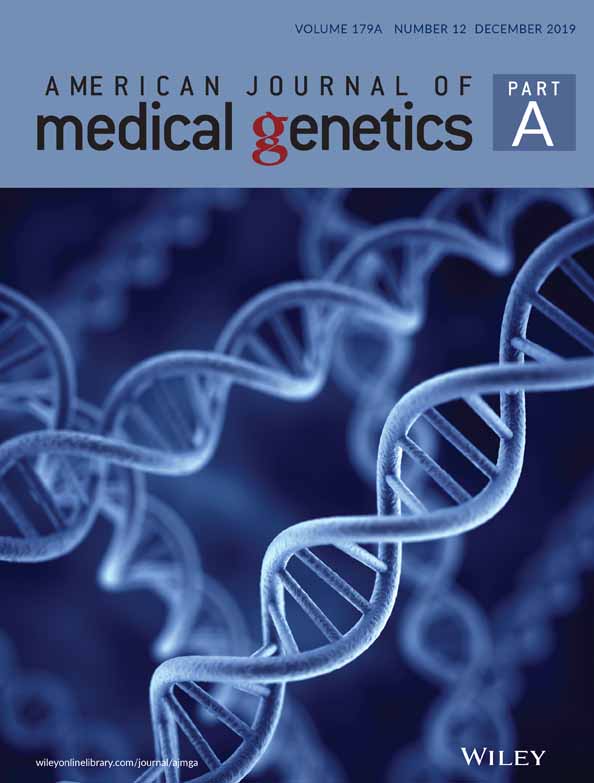Broken bones and irresponsible testimony?
I read with some dismay the article by Dr. Natasha Shur in the January 2019 issue (Shur, 2019). I declare an interest; I, too, have been accused of providing irresponsible testimony in courts in the United Kingdom and the United States.
From 1965 onwards my field of clinical work and research has been the metabolic and heritable diseases of bone. Over the years, I was the author of two books on bone disease and over 200 articles in journals, including the Lancet, the BMJ, the New England Journal of Medicine, and indeed the American Journal of Medical Genetics. In 1972, I assisted in the foundation of the Brittle Bone Society, the United Kingdom and Ireland equivalent of the Osteogenesis Imperfecta Foundation in the United States. The Brittle Bone Society provides practical support for families with osteogenesis imperfecta (OI). My role was primarily administrative. However, it did give me a unique opportunity to see personally over 700 patients with OI and similar disorders. Out of this came more than 30 papers, mainly uncontroversial, on different aspects of OI.
In 1974, the Society began to receive appeals for help from parents whose children had unexplained fractures and who had been accused of nonaccidental injury (NAI). Initially, I thought that there was a simple differential diagnosis of OI versus NAI. Indeed, we did find some cases in which we could make a confident diagnosis of OI (Paterson & McAllion, 1989). However, it later became clear that other disorders could also be misdiagnosed as NAI, including Vitamin D deficiency rickets (Keller & Barnes, 2008; Paterson, 2009a), bone disease of prematurity, Vitamin C deficiency, and others (Paterson, 2012).
In 1986, I was asked to investigate two infants, one in England and one in the United States, each with over 30 rib fractures in various stages of healing but with reliable information that there had never been any superficial evidence of inflicted injury. There were no convincing features of OI and it seemed likely that the condition represented a previously unrecognized disorder. I called it temporary brittle bone disease because we could not identify the cause. Others have seen the same disorder and have called it metabolic bone disease of infancy. It appeared to be a great deal more common than OI as a cause of misdiagnosis.
Up to 2001, I investigated over 100 of such cases, as well as cases of OI, rickets, and other disorders. I had to give evidence in courts in the United Kingdom, the United States, and elsewhere. My evidence often contributed to acquittals and to the return of children to their own parents. Colleagues increasingly attacked this evidence because it challenged opinions strongly held for the preceding 40 years. In 2004, it led to the loss of my medical license in the United Kingdom. This did not affect me unduly since I had retired 2 years earlier after 40 good years of clinical and academic medicine. However, my experience did have the effect of inhibiting other colleagues in the United Kingdom from questioning established views on the cause of unexplained fractures in infancy, particularly rib fractures and fracture-like classical metaphyseal lesions.
Since retirement I have had the opportunity of reviewing our data on these cases and I remain very concerned about false diagnoses of abuse. We reported 104 infants with striking clinical similarities, often including a gross discrepancy between radiological and clinical evidence of injury (Paterson & Monk, 2014). We reported five cases of a similar disorder in which NAI could be excluded with confidence because the fractures occurred in hospital (Paterson, 2009b). We reported the outcome of 61 children returned to their parents as a result of my evidence (Paterson & Monk, 2011). With a mean follow-up period of 6.9 years, none had subsequent injuries suggestive of abuse. Metaphyseal lesions are often regarded as indicating abuse but others have drawn attention to their likely biological nature (Ayoub, Hyman, Cohen, & Miller, 2014).
The idea that joint laxity is relevant to unexplained fractures in infancy is entirely reasonable and not farfetched. I did not examine the joints of the children I investigated, but I did record the examination of the parents and other relatives because of our concern about OI. We have independently identified a significantly increased incidence of joint laxity in one or other parent and published our findings (Paterson & Mole, 2012).
We still do not know all the causes of unexplained fractures in infancy but we do recognize contributing factors, particularly premature birth, twin pregnancy, Vitamin D deficiency, copper deficiency, Vitamin C deficiency, and heritable factors (Paterson, 2012). Much more research is needed but my experience in the United Kingdom has meant that nobody, appropriately qualified, is willing to undertake such research, which calls for the investigation of individual cases with an open mind. The idea that certain lesions are likely to represent abuse is widely believed but is based on circular reasoning (Berthold et al., 2018; Chauvin-Klimoff, Allard-Dansereau, & Colbourne, 2018; Flaherty et al., 2014; Högberg, Andersson, Högberg, & Thiblin, 2019; Paine, Fakeye, Christian, & Wood, 2019). Indeed, much current research is directed at maximizing the evidence of abuse (Raynor, Konala, & Freemont, 2018; Shelmerdine et al., 2018; Wood et al., 2018).
If we fail to undertake relevant research and continue to disparage the few colleagues who question the current dogma, we are likely to do much more harm than good. Nobody wants to miss a genuine case of abuse, but an incorrect diagnosis of abuse may lead to the destruction of a normal family. The parents may be incarcerated. Any older children removed from their parents may suffer long-term damage. The children in question will grow up being told that they were fostered or adopted because, when they were very small, they were hurt badly by their real parents. This too is child abuse.
CONFLICT OF INTEREST
The author declares no potential conflict of interest.




